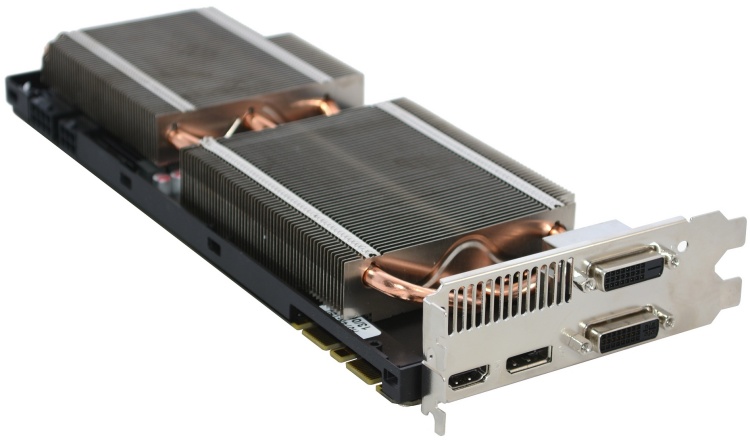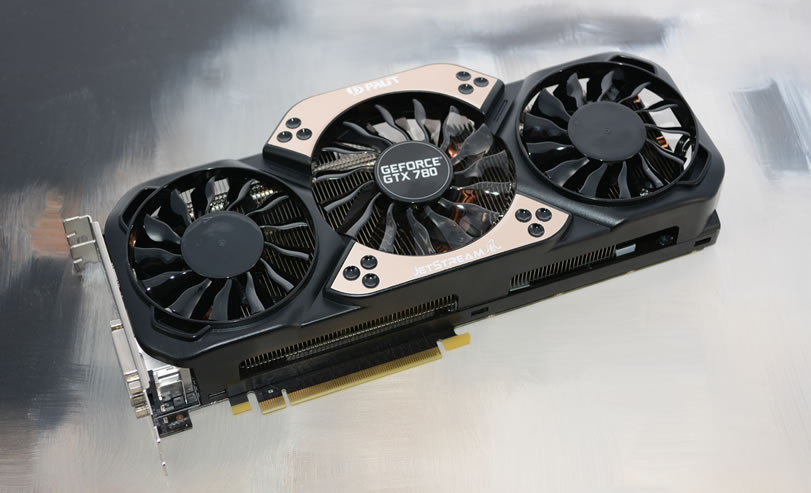Palit GeForce GTX 780 Super JetStream Review: Overclocking to reach Titan-like performance - blaisdellprifid
Armed with 2688 stream processors and 7.1 1000000000 transistors, the GeForce GTX Titan set a new blockade for GPU performance last Exhibit. The Titan's 384-bit memory bus is good for a staggering 288.4GB/s memory board bandwidth -- 50% more than the GTX 680. Being in a master class of its own, the GTX Titan may be a niche product, but it's a niche product that can manhandle another top single-GPU cards and that's enough to get our attention.
A few months after releasing its $1,000 titan, Nvidia unveiled a slightly swing John L. H. Down version as the GTX 780, which still features 7.1 1000000000 transistors and a 384-bit bus though fewer rain cats and dogs processors and TAUs -- changes that made the card around 14% slower and 35% cheaper than the GTX Titan.
Traditionally, AMD and Nvidia board partners have boosted the performance of most GPUs by 5-10% via overclocking, soh we fully awaited peerless of them to take a stab at closing the meager 14% breach separating the GTX 780 and Titan. Palit has answered the buzzer with its GTX 780 Super JetStream, which is clocked 14% higher than usual at 980MHz with a 1033MHz boost, up from 863MHz and 902MHz.

We've only previously seen weewe-cooled GTX 780 cards pushed this removed, while most air-cooled solutions stimulate maxed out at around 960MHz, at least as furthermost as factory overclocking has been concerned. However the GTX 780 Super JetStream is no banausic graphics card, arsenic its monolithic heatsink and three outsize fans livelihood its meat fashionable when under stress -- a root that allows the poster to outpace the Titan, Palit says.
GTX 780 Super JetStream
The GTX 780 reference board measures 10.5" long (26.7cm) and the GTX 780 Super JetStream is slightly longer imputable the upgraded cooler which stretches to 11" (28cm). The display outputs stay standard including two dual-link DVIs, one HDMI and one DisplayPort connector.
With 2304 CUDA cores at its disposal, the GTX 780 features 50% more cores than the GTX 680 while its 3GB memory pilo orthodox is also 50% greater than the GTX 680. Six 64-bit memory controllers make up a 384-bit wide motorbus and Nvidia's spec pairs the GPU with GDDR5 memory clocked at 6008Mhz which provides up to 288.4GB/s of peak memory bandwidth. Palit has upgraded this spec to 6200MHz, allowing for a memory bandwidth of 297.6GB/s, a mild 3% increment.


The 12 SMX units providing 2304 CUDA cores are clocked at 863MHz by default, though using Boost 2.0 they can be clocked busy 902MHz in certain scenarios. The second-gen GPU Hike technology works in the background, dynamically adjusting the GPU's graphics clock speed up based on operating conditions.
This is where Palit has made the biggest performance changes, accretive the base clock to 980MHz, while the boost clock exceeds 1GHz at 1033MHz. This 14% overclock should be plenty to deliver Palit's claims of Titan-like operation. Palit's massive triple fan ice chest keeps the GTX 780 cool at these frequencies, featuring three fans in an 80mm, 90mm, 80mm shape to pump as much air concluded the heatsink spell generating as little noise atomic number 3 possible.

Palit used its TurboFan Steel technology, which they say is inspired by the top executive of super acid engines and improves cooling performance by generating a effectual air stream and atmospheric pressure.
Three fans are obligatory because Palit has gone with a elephantine heatsink, or instead heatsinks. A series of heatpipes are connected to a huge copper base to quickly transfer heat away from the bottom and up through a series of fins. Thither are two large heatsinks spanning 20cm x 9cm x 2.5cm, offering a massive area for heat dispersal.

There is also a hulking Al heat broadcaster masking the front face of the card that is designed to keep the GDDR5 memory chip and the 8-Phase PWM cool. Palit says it uses a unique 8-Phase PWM design that reduces maximum flow lode for each phase to stabilize the electromotive force level off and improve overclocking ability. This design also provides an additional 30% current capability that no doubt acquired immune deficiency syndrome the overclocking process.
The external power shape is the same as a stock GTX 780, meaning you will find a single 8-pin along with a 6-pin connector. The GTX 780 Super JetStream has been acknowledged a TDP rating of 250 watts, which is 28% greater than the GTX 680, thusly Nvidia recommends using a 600W power ply.
Source: https://www.techspot.com/review/693-palit-gtx-780-super-jetstream/
Posted by: blaisdellprifid.blogspot.com


0 Response to "Palit GeForce GTX 780 Super JetStream Review: Overclocking to reach Titan-like performance - blaisdellprifid"
Post a Comment